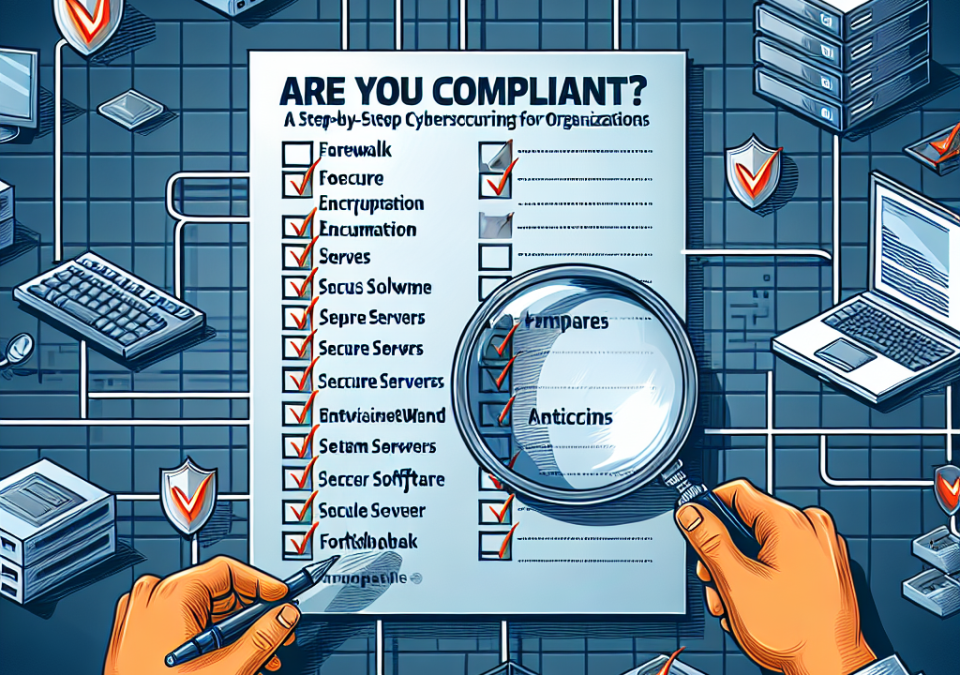
Future-Proofing Your Business: Upcoming Trends in Security Compliance
July 11, 2025
Navigating Industry Standards: A Quick Look at PCI-DSS, HIPAA, and More
July 12, 2025
In today’s digital landscape, organizations face an unprecedented array of cybersecurity threats that can disrupt operations, compromise sensitive data, and damage reputations. Compliance with cybersecurity regulations and standards is essential not only for safeguarding valuable information but also for maintaining customer trust. To help you navigate these complexities, we’ve compiled a comprehensive step-by-step cybersecurity checklist.
1. Assess Your Current Security Posture
Evaluate Existing Policies and Procedures
- Conduct a thorough review of current security policies, standards, and practices.
- Identify gaps or outdated procedures that need revision.
Conduct a Risk Assessment
- Identify critical assets and data that require protection.
- Evaluate vulnerabilities, potential threats, and the likelihood of an incident occurring.
Review Regulatory Requirements
- Familiarize yourself with applicable regulations (e.g., GDPR, HIPAA, CCPA) and industry standards (e.g., ISO 27001, NIST).
- Determine the specific compliance requirements relevant to your organization.
2. Develop and Implement Security Policies
Create a Comprehensive Information Security Policy
- Establish clear guidelines covering the organization’s approach to data protection, incident response, and employee training.
- Ensure policies address both digital and physical security measures.
Designate a Chief Information Security Officer (CISO)
- Assign responsibility for cybersecurity governance and strategy.
- Ensure the CISO has the authority to implement necessary policies and procedures.
3. Train Your Employees
Conduct Regular Security Awareness Training
- Provide ongoing training sessions that cover topics such as phishing, social engineering, and safe internet practices.
- Use real-world scenarios to prepare employees for potential threats.
Implement Role-based Access Control
- Ensure employees have access only to the data and systems required to perform their jobs.
- Regularly review and update access permissions.
4. Monitor and Detect Threats
Utilize Security Information and Event Management (SIEM)
- Deploy SIEM systems to aggregate, analyze, and monitor security data in real-time.
- Establish alerts for suspicious activities and potential breaches.
Conduct Regular Vulnerability Scans
- Schedule periodic assessments of networks, applications, and systems to identify vulnerabilities.
- Prioritize patching and remediation efforts to address critical issues.
5. Establish Incident Response Procedures
Develop an Incident Response Plan (IRP)
- Document specific procedures for responding to cybersecurity incidents, including identification, containment, eradication, recovery, and lessons learned.
- Assign roles and responsibilities for team members involved in incident response.
Run Drills and Simulations
- Test the effectiveness of your IRP through tabletop exercises and simulations.
- Update the plan based on feedback and new threats.
6. Secure Third-Party Relationships
Conduct Third-Party Risk Assessments
- Evaluate the security practices of vendors and partners that will access your systems or data.
- Require third parties to comply with your cybersecurity policies.
Establish Contracts with Security Requirements
- Include clauses about data protection and incident notification requirements in contracts with third-party vendors.
7. Maintain Compliance through Continuous Improvement
Regular Compliance Audits
- Schedule audits to ensure ongoing adherence to regulatory standards and internal policies.
- Use audit findings to drive improvements in cybersecurity practices.
Stay Informed about Cybersecurity Trends
- Follow industry news and updates related to cyber threats and compliance requirements.
- Adapt your security measures in response to evolving threats and regulations.
Conclusion
Ensuring compliance in the realm of cybersecurity is an ongoing commitment that requires proactive measures and constant vigilance. By following this step-by-step checklist, organizations can not only protect themselves from the risks associated with cyber threats but also foster a culture of security awareness and accountability. In a world where the consequences of a breach can be devastating, being compliant is not just about meeting regulatory requirements — it’s about protecting your organization, your employees, and your customers.







